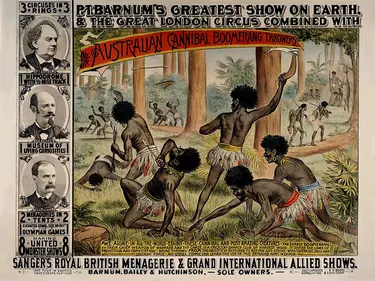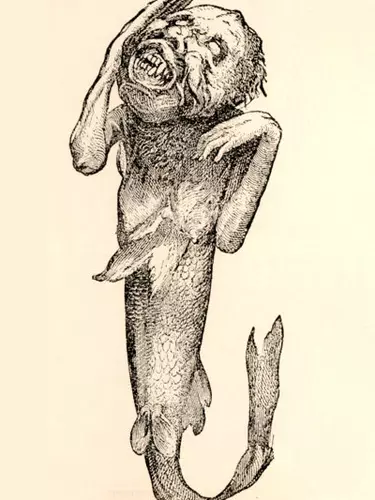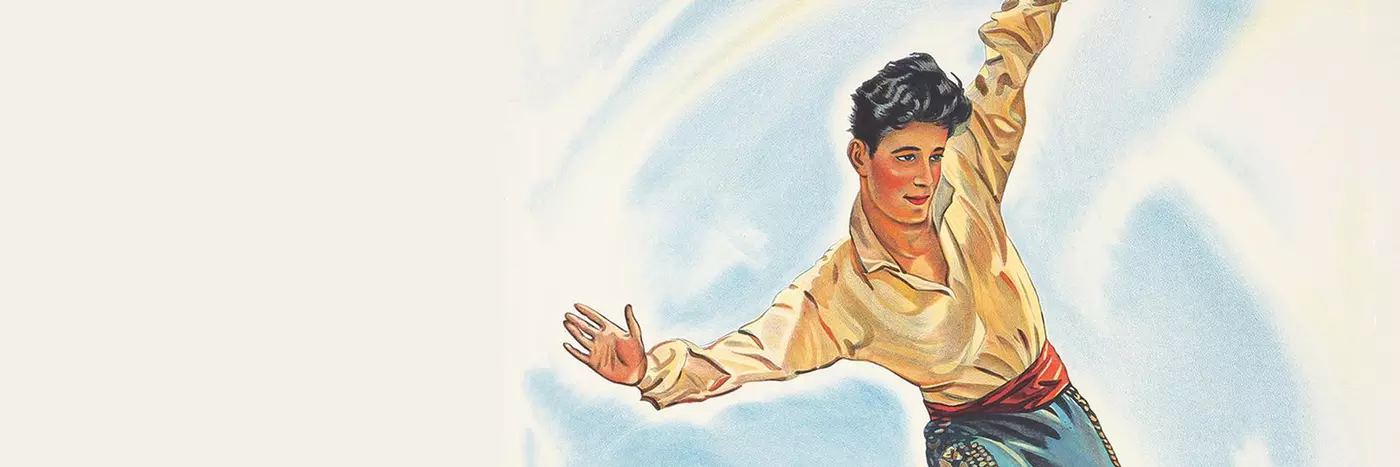Exposing the fallacy of circus ‘showmen’
Meet the true circus wonders
For years, tall tales have been spun of classic circus purveyors who defined the theatrical ‘big top’ experience. Barnum & Bailey, Burton and Fitzgerald have been immortalised on stage and screen as ingenious businessmen and entertainers.
A smorgasbord of big top acts, including jaw-dropping high wire acts, bearded ladies and strong men lured thousands of punters in the late nineteenth and early twentieth centuries.
The truth behind these ‘innocuous’ humbugs is revealed in a brand new show created and written by Rhoda Roberts, the Sydney Opera House Head of First Nations Programming. Natives Go Wild taps into a hidden history, the little known stories of Australia and the Pacific’s early First Nations circus performers.
Coerced and scammed by the likes of so called ‘visionaries’ like P.T. Barnum, First People were put on display and forced to perform. Later, many would change their identity to gain work — as the circus and vaudeville offered a way off the missions — with some billed as Spanish, South American or ‘Wild Indian’ in the late 19th and early 20th century.
Commerciality over culture
One of the most famous circus performers of the 1920s, Con (Cornelius) Colleano performed for the Ringling Bros and Barnum & Bailey Circus. Dubbed ‘The Wizard of the High Wire’ Colleano was the first performer to perfect the forward somersault on a tightrope.
As one of the highest paid circus performers of his generation, Colleano’s Aboriginal heritage was concealed, performing instead under the guise of an exotic Spaniard.
In Natives Go Wild, The Wizard of the High Wire will be played by Waangenga Blanco.

Coercion and deceit
In the 1880s and 1890s P.T. Barnum sent agents to Australia to ‘encourage’ Aboriginal people to leave their homes, travel to the US and Europe, and join his circus. Two groups were persuaded, one from Palm and Hinchinbrook Islands and the other from Mungalla Station.
Barnum presented them as the ‘Australian Cannibal Boomerang Throwers’, overlooking the fact that neither group actually used the instruments as their ‘chief weapon of warfare’, as it was advertised.
Most members of the two groups died of pneumonia, unable to acclimatise to the Northern Hemisphere’s cold conditions. ‘Tambo’ was the first to die, his embalmed body sold to a dime museum and only repatriated to Palm Island in 1993, where customary ceremonies were finally performed 110 years after he died.

The body snatcher
The infamous circus master P.T. Barnum is often known as ‘the body snatcher’ amongst First Peoples. He had unsavoury dealings with slave traders such as W.C. Gardenhire, although at the time the barbaric practice had been abolished. In 1872, Barnum purchased four Fijians to perform as the ‘Fiji Cannibals’, Ki Na Bose Yaco, Ko Ratu Masi Moa, Otavah, and Ra Bian – known as ‘The Dwarf’ or ‘The Little General’. The four were used in Barnum’s ‘Human Zoo’ menagerie and freak show, a common feature of circuses at the time. Barnum also bought 'Princess Otavaia', who was believed to have been a African American slave from Virginia, to add to the cannibal act.
Smoke and mirrors
Possibly the greatest hoax perpetrated by P.T. Barnum was the ‘Feejee Mermaid’. After his real-life star attraction died, Barnum crudely stitched the head and torso of a monkey to the tail of a fish. First exhibited in 1842 at Barnum’s American Museum in New York, it was advertised as “an exotic discovery of the mythical creature from the islands of Fiji.”
Barnum distributed thousands of flyers advertising the exhibition with images of voluptuous, seductive ocean maidens, drawing huge crowds of believers and deniers alike to ogle and gasp.
A number of Feejee mermaids were made and the last installation of what was seen as an abomination is on display at Coney Island, although the monkey has now lost all its hair.
The Feejee Mermaid will be depicted by Josephine Mailisi in Natives Go Wild.

A story of resilience
The most recognised Aboriginal identity in Australian circus was William ‘Billy’ Jones, otherwise known as ‘Little Nugget’, of Burton’s Circus. He rose to fame by appearing in almost every official Australian circus in the 1850s, performing as an equestrian, juggler, acrobat, ropewalker and ringmaster.
He wowed adoring fans by leaping over twenty horses and walking a tightrope stretched from the centre pole of the big top down to a tree stump. Dan FitzGerald (of FitzGerald Brothers’ Circus) claimed Jones had the mind and energy to plan and execute the organisation of a great circus.
William Jones (Little Nugget) will be played by Beau James.
These characters were among many Aboriginal people kidnapped or lured and coerced to join Barnum’s circus, who understood this to be their new lot in life, and some even embraced it as a vehicle to lead a new secret existence away from the missions.
To escape the Aboriginal Protection Board, which governed where Aboriginal people could live or work and quarantined all their wages, many performers hid their identity to get ahead.
Natives Go Wild is fundamentally about truthtelling, and honouring the strength and enduring resilience of First People. But it’s also about celebrating the incredible skill and virtuosity of First Nations circus and cabaret performers, layered with provocative political humour and stinging social commentary.
